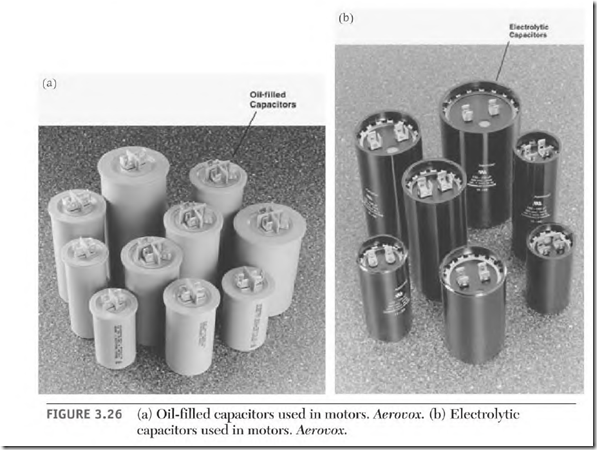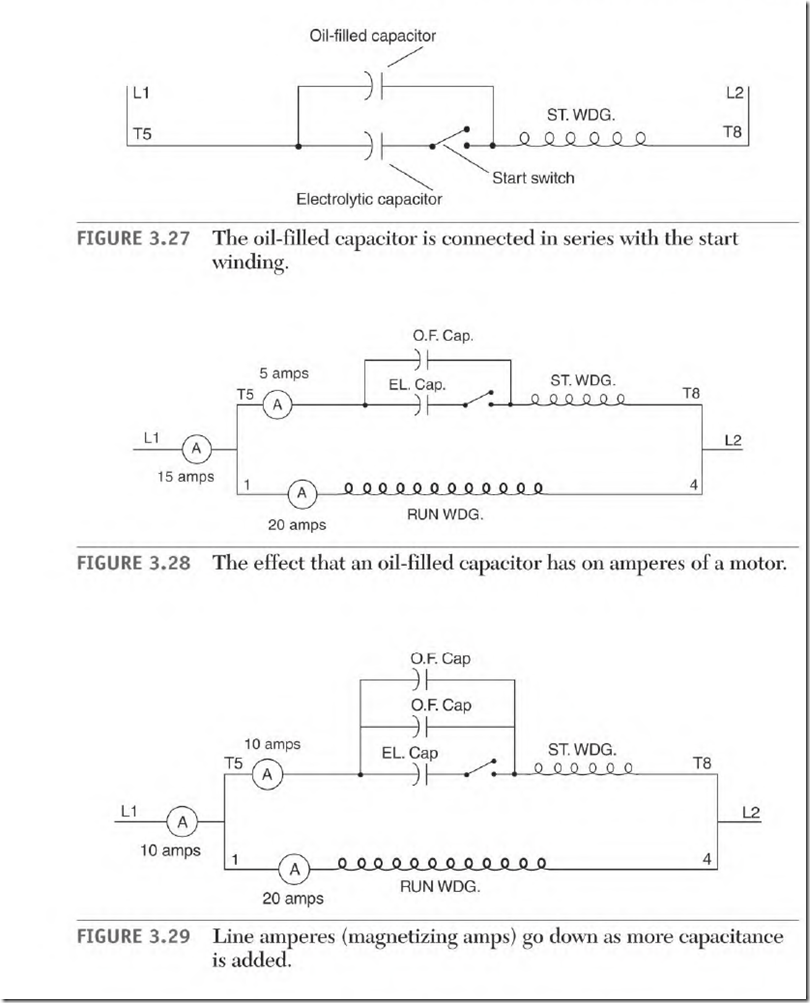Oil-Filled Capacitor in Single-Phase Motors
The oil-filled capacitor is used to improve the power factor of capacitor-start, capacitor-run motors. In a permanent-split capacitor-run motor it will shift
Oil-Filled Capacitor Components
The oil-filled capacitor has two aluminum plates that are separated by a thin sheet of plastic. The aluminum plates are very thin because this type of capacitor limits the amperes to a low value.
Aluminum is melted and sprayed on the plastic dielectric to form the plates. This results in a rough surface, which increases the plate
area for a given length of dielectric. This design reduces the overall size of the capacitor.
The physical size of the oil-filled capacitor is very large compared to the electrolytic capacitor. This is because the dielectric of an oil-filled capacitor is much thicker than the dielectric of an electrolytic capacitor.
The oil-filled capacitor is designed for continuous service. The oil is used to cool the capacitor. The plates and dielectric are rolled tightly, insulated, and sealed in a metal container filled with oil.
The voltage rating of oil-filled capacitors should be at least twice that of the motor.
Oil-Filled Capacitor Connection in a Two-Value Capacitor Single-Phase Motor
The oil-filled capacitor is used to improve the power factor of a singlephase motor. It’s connected in series with the start winding (Fig. 3.27). They are always connected in parallel with the start switch contacts and the electrolytic capacitor. If two or more are used, they are always connected in parallel with each other and are never connected in series.
The start contacts are open when the motor is running. The electrolytic capacitor is now disconnected. There is now a circuit from line 1 —through the oil-filled capacitor and the start winding—to line 2. The amperes through the start-winding circuit are leading the voltage. This reduces the magnetizing amperes caused by the run winding’s low power factor. The number of leading start-circuit amperes is subtracted from the amperes of the run winding. Figure 3.28 shows the amperes of each circuit, with the result displayed on the line ammeter. If the capacitance is doubled, as in Fig. 3.29, the start-winding circuit amperes are doubled. The run-winding amperes stay the same, and the line amperes are correspondingly less.
Mounting the Oil-Filled Capacitor
Use caution when mounting the oil-filled capacitor. Be sure the lid is free to move.
When the dielectric of oil-filled capacitors breaks down, an arc forms between the plates. The arc vaporizes the oil and causes the container to swell, rupture, and possibly catch fire. The lid of the container is designed so that it automatically disconnects the capacitor, therefore eliminating the problem.
The lid contains the external terminals, as shown in Fig. 3.30. When it’s in place, a protrusion under the terminals presses against the lead straps of the plates. The lid moves upward when vaporized oil has caused the container to expand. The terminals are then automatically disconnected from the plates.

